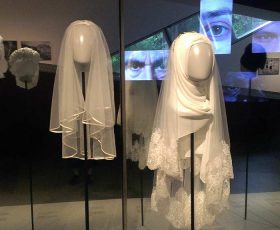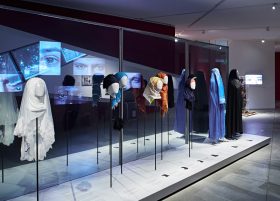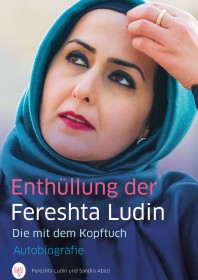The Italian Writer Elena Loewenthal Reflects on Strong Jewish Women in the Torah
The current exhibition Cherchez la Femme, which explores religious dress codes for women from women’s perspectives, remains on display until 27 August (more about the exhibition on our website). When I first found out the exhibition’s theme, I immediately thought of the novel Attese (2004) by the Italian author Elena Loewenthal. (The title means either “expectations” or “times of waiting.”) In four extended sections, the novel tells the stories of different Jewish female characters throughout the ages. But the novel’s real main character is a mysterious veil that follows the protagonists from Biblical times to modern-day Venice.

Veils in the exhibition Cherchez la femme; Jewish Museum Berlin, photo: Mirjam Bitter
We can read the veil as a metaphorical vessel of Jewish memory that women have guarded and passed on, a vessel that embodies recollection and forgetting, tradition and renewal. Indeed, the reasons each woman in the novel dons the veil are not only cultural (such as marking mourning) but personal: each of them reshapes it, sews in her own threads, or at least cultivates an idiosyncratic relationship with the garment she inherited. → continue reading
Our visitors on Cherchez la femme
For over three months, the exhibition Cherchez la femme has allowed visitors to explore the topic of women’s head coverings in three of the world’s major religions. Among other things, the exhibition demonstrates that the borders of (religious) clothing rules are constantly being redrawn and reinterpreted.
Since we’re very interested in the opinions of our visitors, we asked around about what people thought at the exhibition:
Christian (39), Ludwigsburg, pastor, teaches German and history
Which object did you like the best?

Different kinds of head coverings; Jewish Museum Berlin, photo: Yves Sucksdorff
The gallery with the different kinds of head coverings. I was impressed by the attention to detail. For example, I didn’t know how many differences
there were between headscarves, between Turkish and Arab styles.
What significance does your own hair have to you?
It’s important to me that I look good. I go to the barber regularly.
Would you say that you follow any clothing rules? → continue reading
A Conversation with Fereshta Ludin about the Headscarf Debate, Discrimination, and Her Hopes for the Future.
To win the right to work as a teacher in the classroom while wearing her headscarf, Fereshta Ludin had to go all the way to the German Supreme Court (see below). On 17 September 2015, she will join us as part of the series “New German Stories” to introduce her book Enthüllung der Fereshta Ludin. Die mit dem Kopftuch (“The Unveiling of Fereshta Ludin: The One with the Headscarf”). Rafiqa Younes and Julia Jürgens spoke with her in the lead-up to the event.

Book cover © Deutscher Levante Verlag
Ms. Ludin, did you ever guess that the first lawsuit you filed against your employers, in 1998 when you were 25 years old, would set off a nationwide debate about the headscarf ban?
You can’t really imagine something like that. I was still very young and idealistic. I wanted to work as a teacher and had no intention of provoking the public or any politicians.
From your perspective, was it worth it to go all that way through courts, becoming, as you did, a public figure – “the one with the headscarf” as the title of your book ironically references?
I don’t regret a single step along the way. I would have regretted much more, to have had to endure the injustice. I took an active stand against discrimination by going through the courts. Many other women were also affected. It was never my aim to become a public person. → continue reading


